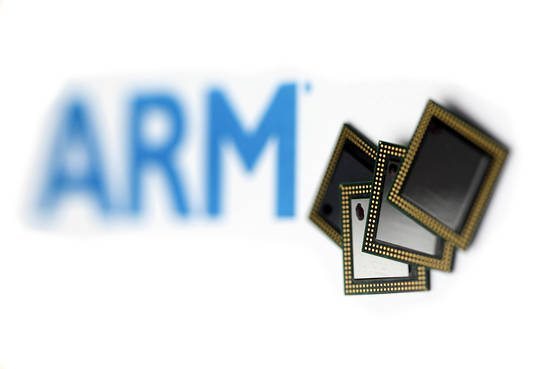
At an event in Nuremberg Germany, ARM Holdings plc (NASDAQ:ARMH) unveiled the Cortex-A32 core for IoT gadgets, next generation wearables, and other low-power embedded processors.
Click Here For More Market Exclusive Updates & Analysis
A majority of connected and smart gadgets today operate on processors made by ARM. According to company statistics, more than 60 billion chips run on its cores. In other words, ARM is the leading provider of processor chip level intellectual property for the Internet of Things (IoT).
Last year ARM debuted its CPU cores in fresh low-power ranges, including the Cortex-A35 core that can run operating systems including Windows, Android and Linux. The company also possesses lower-end cores for microcontrollers termed the Cortex-M range and a Cortex-R range for real time applications such as engine controls, communication modems and hard disks.
ARM’s cores are very configurable. They include a basic core with a bus interface as well as L1 caches, which are the temporary memory nearest to the core. Over that, the chip maker can put a menu of different ARM processors including larger cache (L2), a cryptographic accelerator, Neon media instructions and a floating point math co-processor. A maximum of 4 Cortex-A32 cores can be connected together for superior multi-threaded operations, and it can be optimized for clock speeds greater than 1gHz. This makes A32 a highly scalable core, ranging from a basic core to the 1gHz quad core systems.
There is good reason for ARM to continue improving its tiny cores. Moore’s Law is no longer practical as we reach quantum distances between transistors, and it has become more costly to produce chips in the more sophisticated process nodes such as 20nm and 14/16nm.
The cost of silicon, the raw material out of which chips are made, has increased because of the complexity of double and triple pattern processing as well as FinFET transistors. The current state of the art process node is 28nm. It provides a fine balance between power and cost and is relatively cost efficient. Several embedded gadgets are still manufactured using 40nm as well as 65nm nodes. However, 28nm gives an economical price, lower power consumption and better integration that are vital for several small IoT gadgets.




